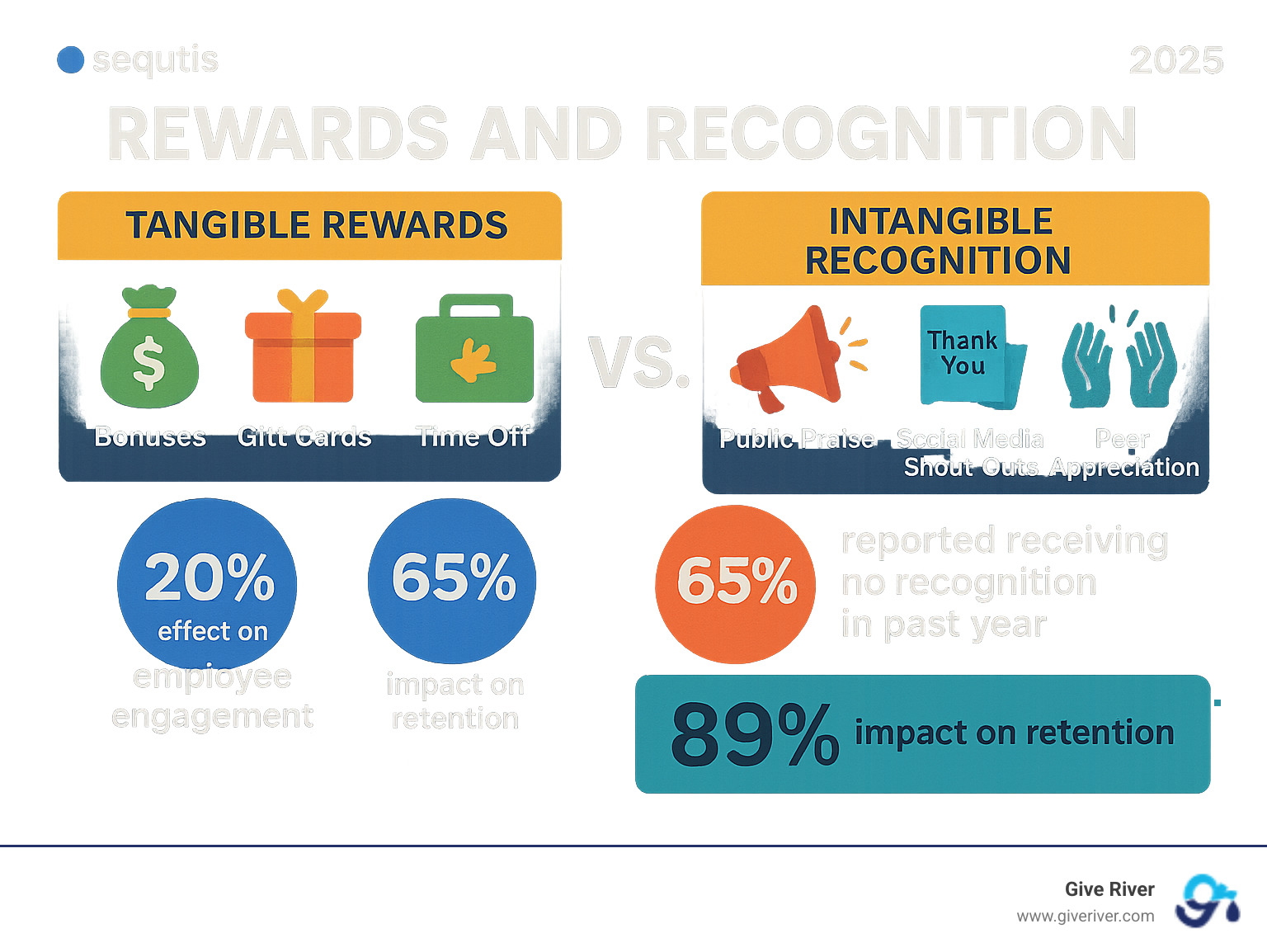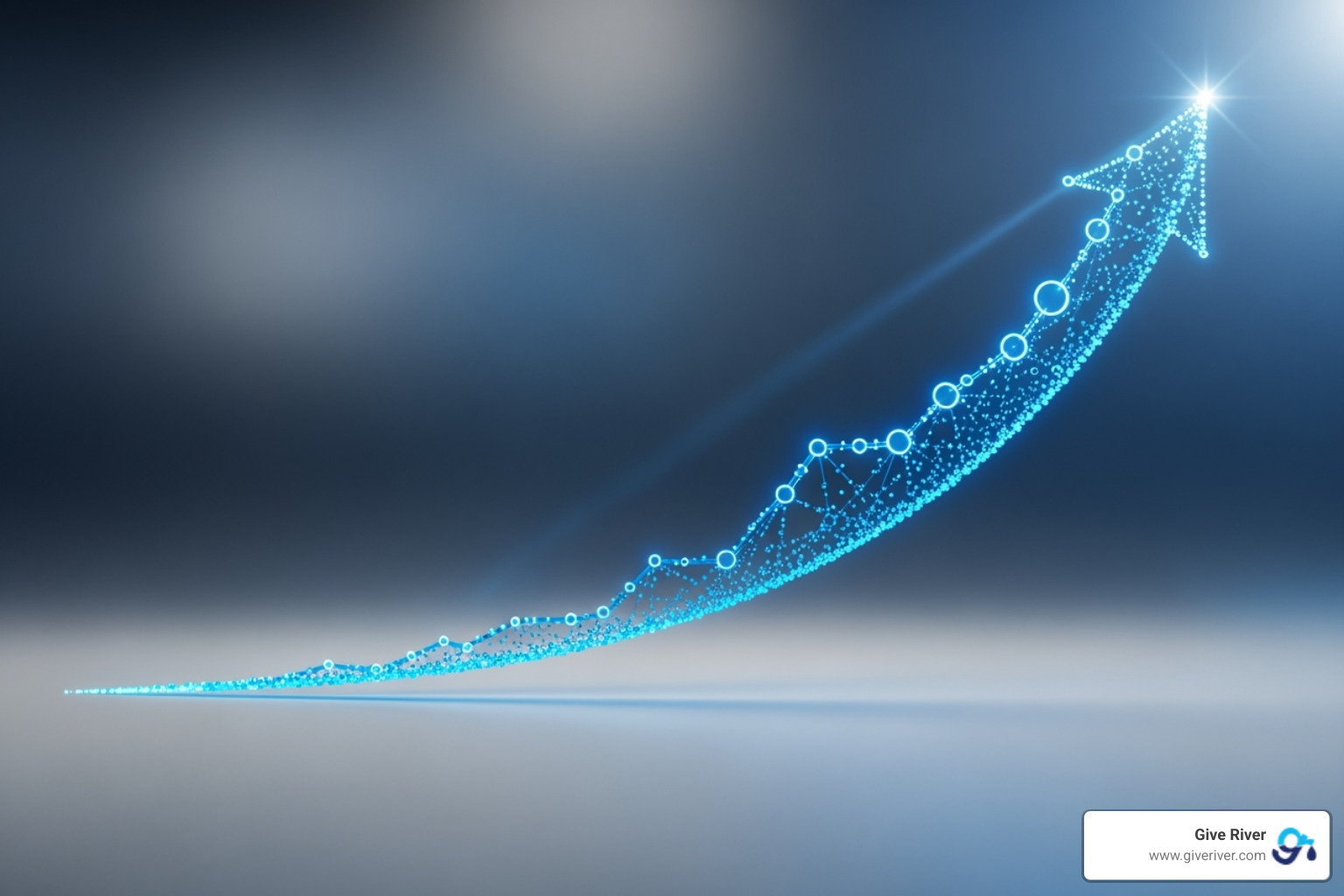Beyond the Paycheck: Understanding the Power of Rewards and Recognition
Discover how effective rewards and recognition programs boost engagement, retention, and productivity. Learn creative ideas and tech solutions.

Why Appreciation Matters More Than Ever
Rewards and recognition are cornerstones of modern employee engagement, yet many organizations struggle with them. Rewards are tangible benefits (bonuses, gifts), while recognition is the intangible acknowledgment of contributions (praise, thank-you notes). Both are vital for engagement, retention, and productivity, especially when delivered regularly.
The statistics reveal a stark reality: only 20% of employees are actively engaged, and 65% received no recognition in the last year. While 89% of employers think employees leave for more money, a lack of recognition is often the primary driver. This "appreciation gap" was amplified by the Great Resignation, where 37% of young professionals changed jobs, often citing feeling undervalued.
The solution isn't just financial. While platforms like Bonusly and Kudos offer digital tools, the most effective strategies combine meaningful recognition with thoughtful rewards to meet employees' psychological needs for appreciation and belonging.
I'm Meghan Calhoun, Co-Founder of Give River. With over two decades of experience in high-pressure roles, I've learned that systematic rewards and recognition are key to creating meaning at work. At Give River, we've seen how our platform can bridge the appreciation gap that costs companies their best talent.

Learn more about rewards and recognition:
The Strategic Impact of Effective Rewards and Recognition Programs
This section explores the fundamental principles, business benefits, and practical steps for creating a recognition-rich culture that drives performance and loyalty. Understanding the 'why' behind rewards and recognition is as important as the 'how.'
Defining the Core Components: What Are Rewards and Recognition?
At its heart, rewards and recognition is a system for acknowledging performance. It's about creating an environment where employees feel seen, valued, and appreciated fairly and in a timely manner.
- Recognition is the act of acknowledging specific accomplishments or behaviors, often in non-monetary ways like praise or a public shout-out. It celebrates effort, fosters belonging, and encourages positive behavior.
- Rewards are tangible or monetary benefits given for achievements, such as bonuses, gift cards, or promotions. They serve as direct incentives for high performance.
While both are vital, recognition is often perceived as more authentic. It taps into our intrinsic needs for self-esteem and belonging, fulfilling a deep psychological need that financial compensation alone cannot. An effective system clarifies which behaviors and outcomes the organization values.
Here's a quick comparison:
| Feature | Monetary Rewards | Non-Monetary Recognition |
|---|---|---|
| Form | Cash bonuses, gift cards, stock options, pay raises | Verbal praise, thank-you notes, public shout-outs |
| Tangibility | Tangible, direct financial value | Often intangible, symbolic |
| Primary Goal | Incentive for specific outcomes, compensation | Acknowledge effort, build morale, reinforce values |
| Impact | Short-term motivation, financial well-being | Long-term engagement, psychological well-being |
| Frequency | Typically less frequent, performance-based | Can be frequent, daily, spontaneous |
| Example | Quarterly performance bonus, holiday gift card | "Employee of the Month," team meeting recognition |
At Give River, we believe in the power of gratitude. Our approach integrates these elements to create a holistic employee value proposition.
The Business Case: Why Prioritize Rewards and Recognition?
Investing in rewards and recognition isn't just a perk; it's a strategic imperative with measurable business benefits. A well-designed program directly impacts your bottom line and your people.

Here's why it's crucial:
Boosts Engagement and Motivation: Praise from managers is the top motivator for 67% of workers. Employees recognized monthly are 45% more engaged, as recognition has a stronger correlation with motivation than pay.
Improves Retention and Reduces Turnover: Regular recognition can cut turnover risk by 35%. Employees who feel valued are 56% less likely to look for a new job, challenging the myth that pay is the only reason people leave.
Increases Productivity and Performance: Teams with strong recognition programs are 31% more productive. Well-built incentive programs can increase performance by up to 44%, reinforcing positive behaviors.
Builds a Positive Culture and Psychological Safety: Recognition shapes culture by signaling what success looks like. It fosters a psychologically safe environment where employees feel safe to innovate, which strengthens your employer brand and attracts top talent.
The absence of recognition is detrimental, leading to eroded trust, demoralization, and burnout. An effective Employee Engagement and Recognition Solution is foundational for business success, a fact supported by scientific research on the link between recognition and motivation.
Designing a Program That Works: Key Implementation Steps
Translating conviction into a program that works requires thoughtful design and implementation. A structured approach creates sustainable cultural change.
Here are the key steps for managing your rewards and recognition programs:
Set Clear Goals: Define what behaviors you want to encourage and what outcomes you want to achieve (e.g., higher engagement, lower turnover). Link the program directly to business objectives.
Align with Company Values: Ensure recognition highlights behaviors that align with your mission. High-performing programs (96%) do this, reinforcing company culture.
Gain Leadership Buy-in: Success hinges on leadership support. Train leaders to give recognition and ensure they actively participate to model the desired behaviors.
Define Clear Criteria: Recognition must be:
- Timely: Prompt appreciation has the greatest impact.
- Frequent: Make it a daily habit, not a rare event.
- Specific: Explain what was done and why it mattered.
- Fair: Use clear, merit-based criteria to avoid favoritism.
- Inclusive: Ensure the program is accessible to all roles and departments.
Promote the Program: Employees must know the program exists and how to use it. Communicate through multiple channels and share success stories.
Personalize Rewards: One size doesn't fit all. Offer choices or experiential rewards to make recognition more meaningful to the individual.
Gather Feedback and Iterate: Regularly ask employees for feedback and act on it. Continuous improvement keeps the program relevant and effective.
Common Mistakes to Avoid:
- Lack of clear communication.
- Infrequent or generic recognition.
- Rewarding only outcomes, not behaviors.
- Ignoring employee feedback.
Building the best Total Rewards Package for Your Employees requires strategic thinking and continuous improvement.
Modernizing Your Approach with Creative Ideas and Technology
The workplace has evolved, and so must our approach to rewards and recognition. Today's employees crave authentic, personal appreciation that fits into their daily work. The most successful organizations blend innovative ideas with smart technology to amplify genuine appreciation.
Creative and Unique Ideas for Employee Rewards and Recognition
The most memorable recognition is often personal and meaningful, not necessarily expensive. The secret is understanding what motivates each person.
Peer-to-peer recognition is a powerful tool, as praise from colleagues who understand daily challenges feels authentic. Companies with these programs are 37% more likely to see business results. Similarly, spot awards capture moments of excellence as they happen. These immediate, spontaneous gestures—like a gift card or public shout-out—often carry more weight than planned ceremonies.

Modern recognition is shifting toward personalized and holistic rewards:
- Experiential rewards: Offer experiences like concert tickets or a cooking class to create lasting memories.
- Professional development: Invest in an employee's growth through conferences or certifications. This shows you value their future and pays dividends for the organization.
- Wellness perks: Demonstrate care for the whole person with meditation app subscriptions or fitness memberships.
For remote and hybrid teams, creativity is key. Consider home office stipends, virtual team-building, curated care packages, or flexible work hours to foster connection and autonomy.
The goal is personalization. "Gift of choice" programs, which let employees select their own rewards, are highly effective. For more creative inspiration, explore these Employee Recognition Examples and Workplace Rewards Ideas.
Leveraging Technology to Amplify Appreciation
Technology doesn't replace the human element; it makes genuine appreciation more accessible, timely, and impactful. The right platform can transform sporadic acts into a continuous culture of gratitude.

Key technological features include:
- Real-time feedback: Digital platforms allow instant recognition from managers and peers, capturing achievements while they're still fresh.
- Gamification: Point systems, badges, and leaderboards make recognition more interactive and fun, encouraging consistent participation. Learn more about Gamification in the Workplace.
- Data analytics: Modern platforms offer insights into recognition patterns, helping you measure impact, identify blind spots, and demonstrate ROI.
- Social recognition feeds: These virtual water coolers amplify appreciation organization-wide, inspiring others and reinforcing company values.
- Platform integration: Connecting with tools like Slack or HR systems makes recognition a seamless part of daily workflows.
While platforms like Bonusly and Kudos are excellent tools for peer-to-peer social recognition, Give River's Employee Recognition Platforms are designed to create a more comprehensive ecosystem. We differentiate ourselves by integrating recognition with holistic employee development, including personal wellness, professional growth, and community impact. This approach moves beyond simple rewards to foster genuine fulfillment, providing the infrastructure and insights to weave deep, meaningful appreciation into the fabric of your company culture.
Conclusion: Building a Culture of Gratitude and Fulfillment
Appreciation is not a perk; it's the foundation of a thriving organization. Moving beyond transactional gestures to build a genuine culture of gratitude open ups human potential and delivers measurable business results, from higher engagement and productivity to improved retention.
Success requires a thoughtful strategy: aligning recognition with company values, gaining leadership buy-in, and using a mix of creative ideas and technology. Personalization, timeliness, and fairness are key to creating a program that inspires people to do their best work.
At Give River, our goal is to help you build a continuous habit of appreciation. Our unique 5G Method integrates Recognition, Guidance, Personal Wellness, Professional Growth, Gamification, and Community Impact to create an environment where every employee feels fulfilled.
This is about fundamentally changing how we show up for each other at work. When gratitude becomes a shared language, we create workplaces where people don't just succeed, but flourish.
Ready to transform your culture? See how our Solutions / Recognition Platform can help you build an environment where every contribution is celebrated.




